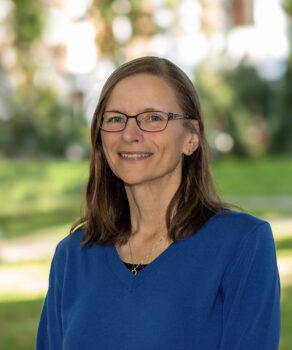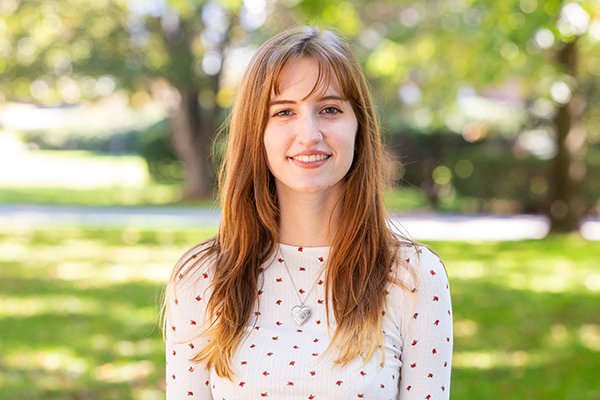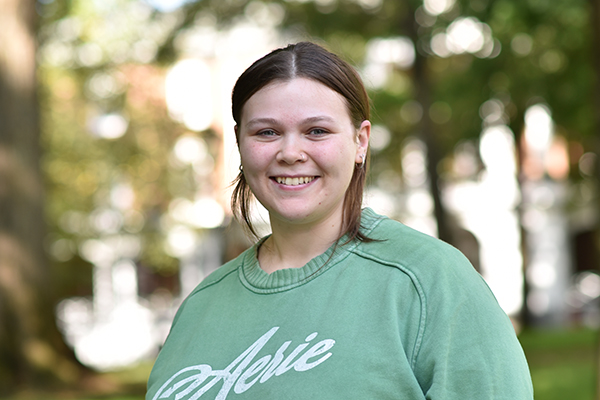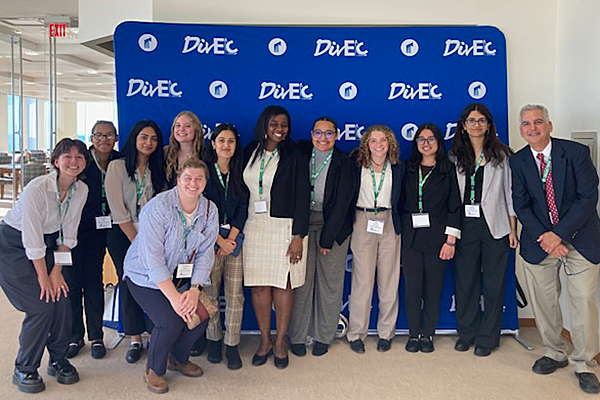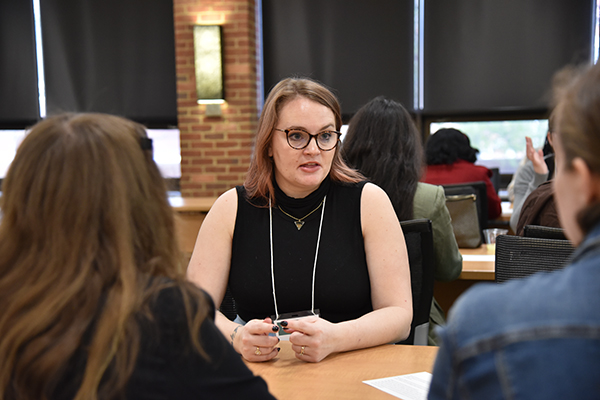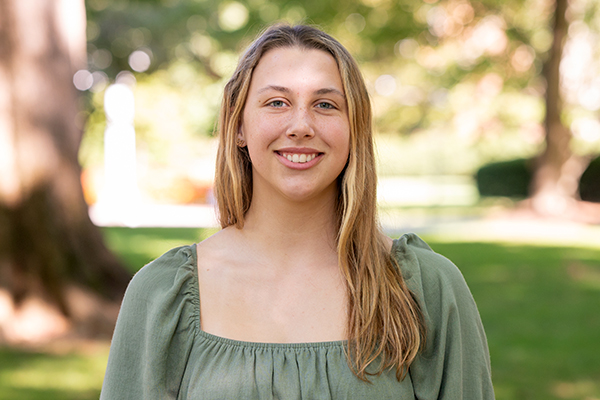When Melissa Hubbard ’13 began her first year at Hollins, she was pleasantly surprised to discover she could earn a bachelor of arts degree, a master of arts in teaching (M.A.T.) degree, and a Virginia teaching license – all in just five years.
“I came here with the intention of majoring in psychology, but I had also always wanted to teach. I was jazzed when I found out we have an education program that offers such an option,” the senior from Chantilly, Virginia, explains. She lauds the program’s approach (“It really gives you a sense of the liberal arts, it overlaps something with everything.”) and flexibility (“You can pretty much pick out whatever undergraduate major you want to do.”).
Here’s how it works: During the first four years, the combined undergraduate and M.A.T. program integrates the education components with the requirements for the bachelor of arts degree. Traditional undergraduate students work closely with an education advisor beginning in the second semester of their first year to map out a plan to meet general education licensure requirements; transfer and Horizon students begin this process during their first semester on campus. The education department recommends all students who are interested in the program enroll in EDUC 141: Schooling in American Society as their first course in order to learn about topics in education and start immediately with field experiences. At the same time, students work on completion of Education through Skills and Perspectives and major requirements with their major advisors. In their fifth year, students complete their remaining professional studies requirements, including a thesis, for the M.A.T., and student teach.
Hubbard says one of the program’s strongest attributes is its emphasis on getting students into the schools. “Every class requires 15 hours of observational work. It’s very important because it’s given me the opportunity to go into the classrooms, interact with students, and see that this is for me, this is something I want to do. It’s also super-helpful experience in preparing me for student teaching.”
Hubbard adds she is also benefiting from the $20,000 “Teaching with Today’s Technology” grant Hollins received in 2011 from the Verizon Foundation to redesign and enhance the education program’s classroom technology integration course. “We have all this new technology we’re practicing with, and we can work that in with what we’re learning and what we can do. It will really be an advantage when I try to get a job.”
Because “there’s so much to get done,” Hubbard says students must begin the program during their first year and embark on it with a sense of purpose: “You have to love learning and love wanting to teach.” Still, she has found time to become an active member of the campus community, playing soccer and lacrosse and serving on the Student Athlete Advisory Committee and the university’s Honor Court. She even holds an off-campus job.
Hubbard doesn’t hesitate to answer when asked which course she’s taken epitomizes the combined program. “For me, it was Psychology Applied to Teaching and Learning. It was just so interesting to see the two things I love put together into something that’s going to be very applicable to me.”
Students interested in pursuing a teaching career at the elementary (grades K-5) level should contact Anna Baynum, assistant professor of education, at abaynum@hollins.edu. Those interested in teaching at the secondary (grades 6-12) level should contact Rebecca Cox, associate professor of education, at rcox@hollins.edu.




